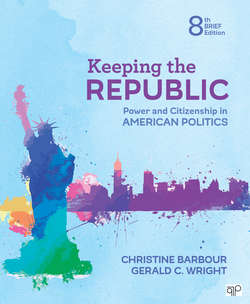Читать книгу Keeping the Republic - Christine Barbour - Страница 48
На сайте Литреса книга снята с продажи.
Where Do You Fit?
ОглавлениеOne of the notable aspects of American ideology is that it often shows generational effects. Although we have to be careful when we say that a given generation begins definitively in a certain year (there is much overlap and evolution between generations), it can be helpful to look for patterns in where people stand in order to understand political trends. We know, for instance, that older white Americans tend to be more ideologically conservative, and because they are reliable voters, they get a lot of media attention. But with researchers gathering public opinion data on younger voters, and with those voters promising to turn out on issues they care about, it’s a good idea to look at where millennials and post-millennials fall in Figure 1.5.
Keep in mind that all we can do is talk about generalities here—obviously there will be many, many exceptions to the rule, and you may very well be one of them. But as a group, younger voters, especially the youngest voters, tend to be economically and socially liberal—that is, they fall in the left-hand side of Figure 1.5. If you want to test yourself, take the quiz at edge.sagepub.com/barbour8e/American-ideology-quiz to see where you fall before you look at the positions of your peers.
Description
Figure 1.6 Political Ideology, by Generation
Source: Pew Research Center, “The Generation Gap in American Politics,” March 1, 2018, http://www.people-press.org/2018/03/01/the-generation-gap-in-american-politics/.
In Your Own Words
Describe values that most Americans share, and the political debates that drive partisan divisions in American politics.
